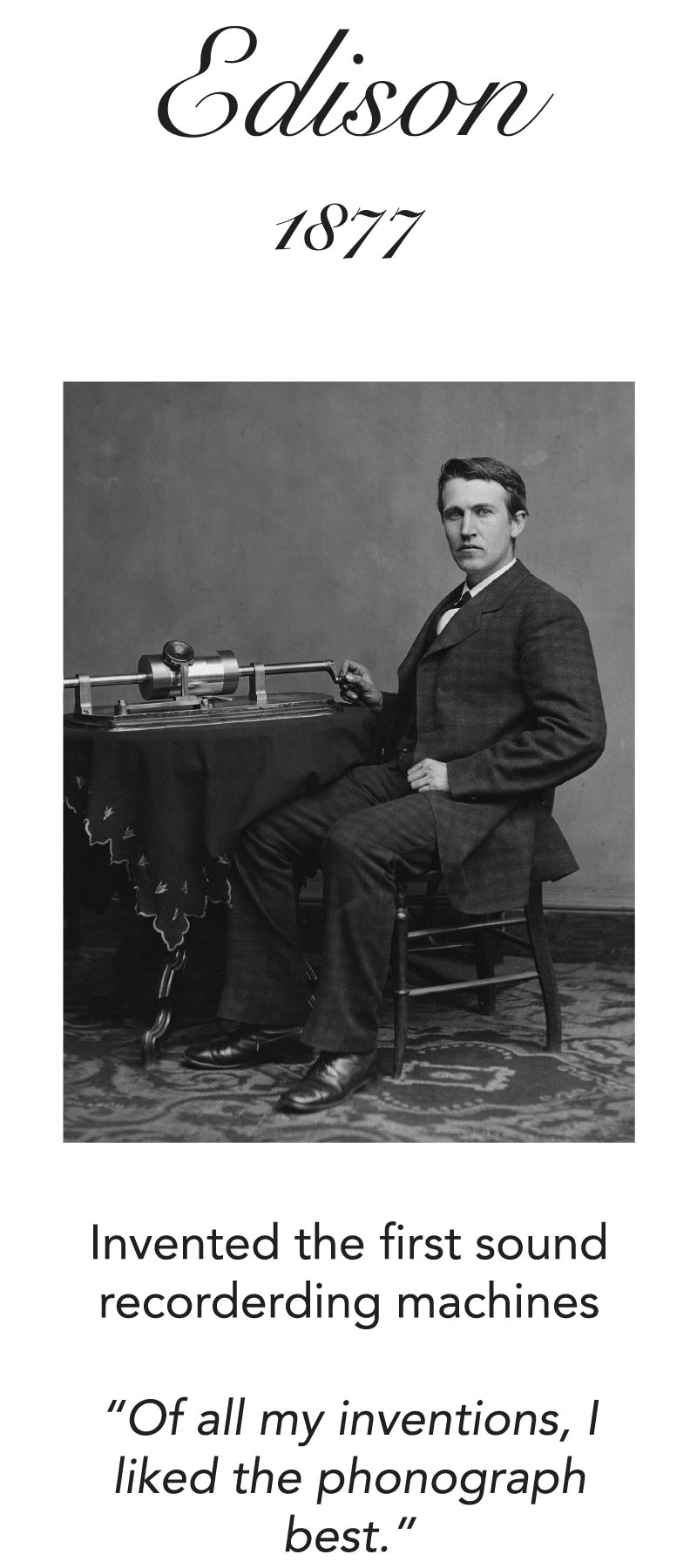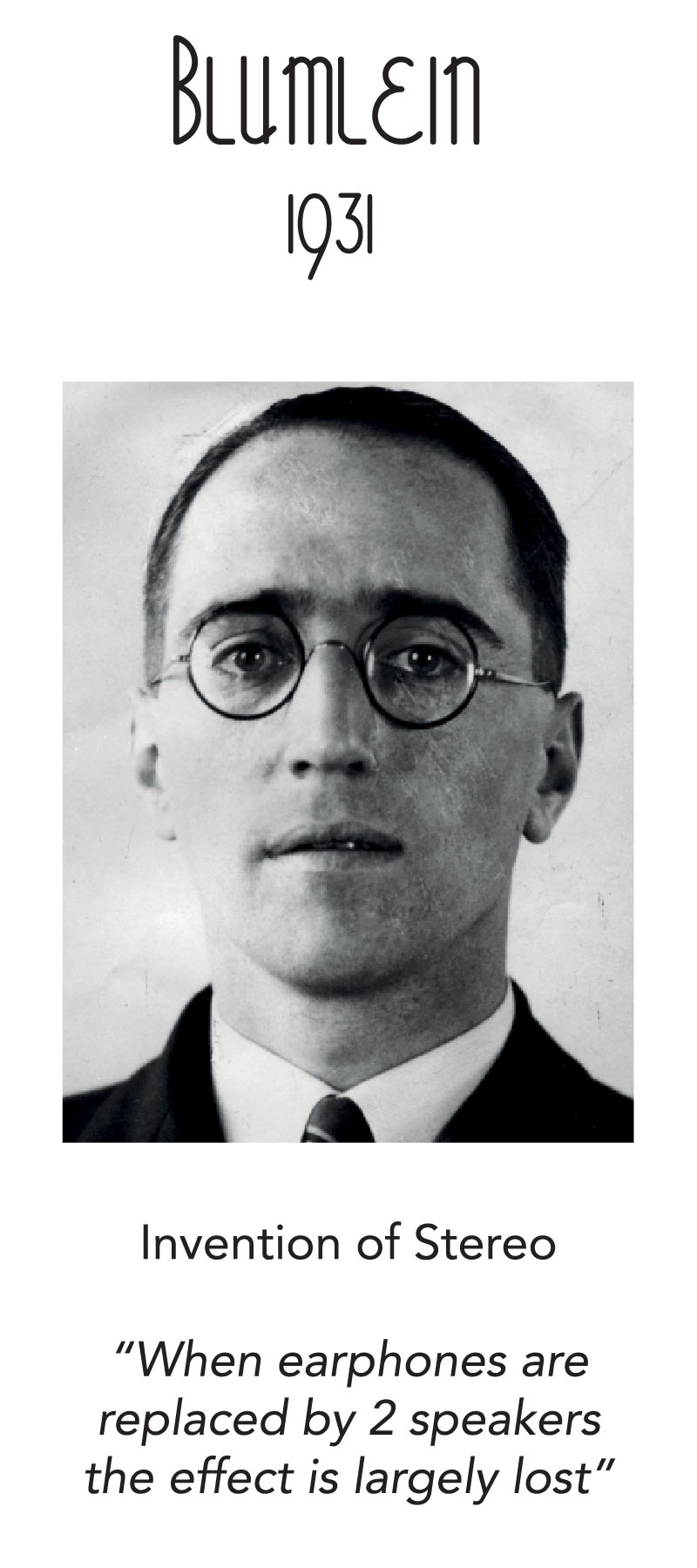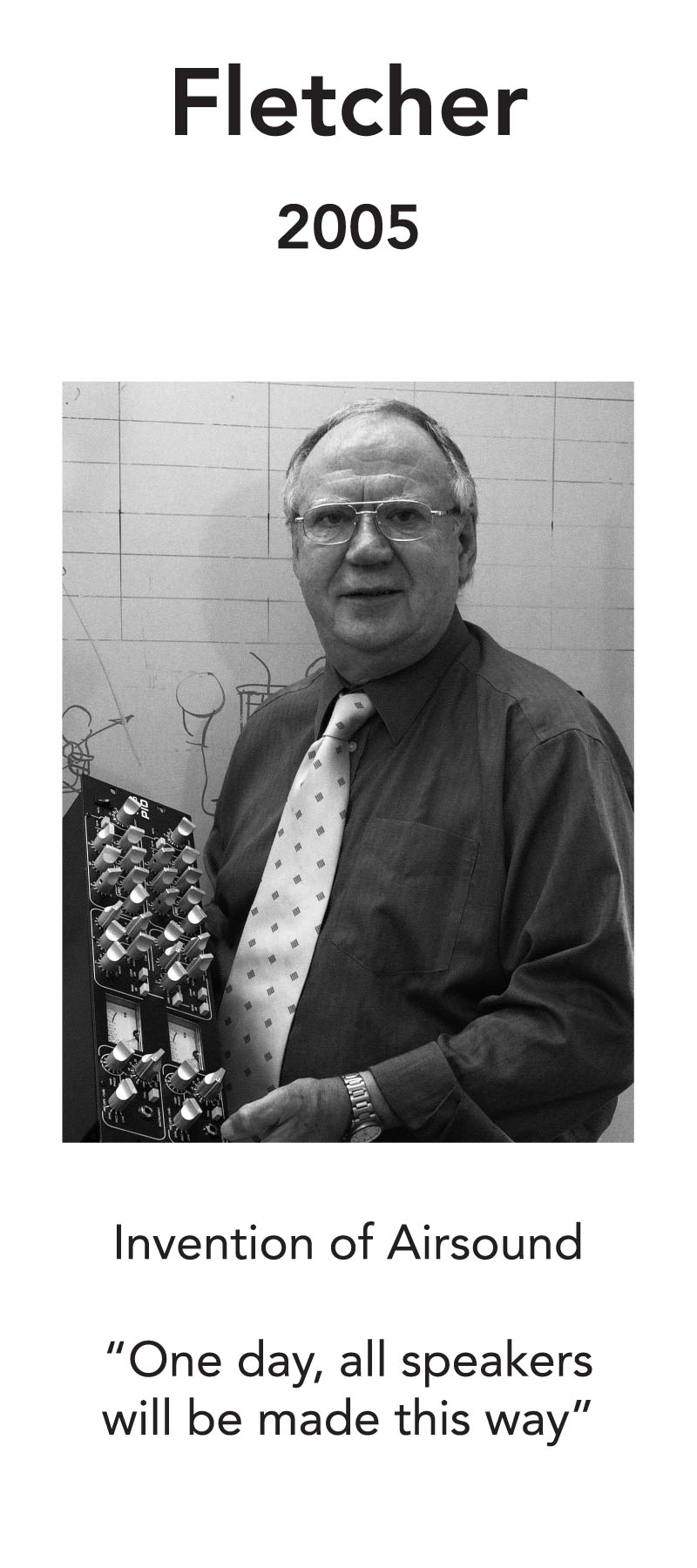The evolution of sound
The History of Sound; Mono, stereo and Airsound; The journey to today’s audio production perfection.



Today, when we listen to music from speakers, we generally hear a high quality mix of instruments and vocals that sounds rich in detail and is convincing (as in, it sounds like real life). It was not always that way. The journey to today’s near perfect audio production has involved hundreds of innovations and revolutions in technology in the capture, mixing, production, recording and playback of sound.
Loudspeaker technology has improved gradually, but the basic concept of how audio is reproduced has remained almost the same for much of recorded sound’s long history. Below we highlight three key moments of invention that affected music playback the most.
Edison & Mono
“Of all my inventions, my favourite is the phonograph” said Thomas Edison to a news reporter as he looked back at his incredibly fruitful career. In 1877, he invented the first machine capable of recording and reproducing sound. As such, Edison is credited to be the founder of the recorded sound era. His machine was simple but ingenious: sound would enter a horn, and make a recording because of the soundwaves being squeezed together as they approached the recording needle (or stylus). This needle would make marks in a wax or some other surface. Then, this marked surface could be used for playback, vibrating the needle, and producing sound that mimicked what the machine ‘heard’ - the sound being amplified by the horn naturally. The machine was marvellous and an instant success. The sound was scratchy, and distorted, but the machine revolutionised the world. Edison’s ‘phonograph’ was the start of his incredible journey of making machines that play back sound in higher and higher fidelity. They would always be in mono - that is, a single sound source or ‘speaker’ until well after the next big leap forward in technology.
Stereo
Alan Blumlein was one of the great engineers of the 20th century. His work was revolutionary in audio, telecommunications, television and radar, yet few have heard of him. This is due in part to his tragically short life, and also due to the second World War demanding total secrecy around much of his work. In his early years, his passion was sound. In 1931, following a visit to the cinema with his wife, Blumlein saw in his mind a way of vastly improving the movie experience; make the sound of the actors appear to move around the screen in unison with the actors themselves. What followed was an incredible patent that had some seventy inventions within. He proposed ‘electrifying’ sound, and devised new ways of capturing and recording sound in ‘stereo’. His amazing idea was to use two different sounds to create a stereo image in the mind of the listener. Our eyes work in the same way; each eye sees two slightly different images, and when combined causes our mind to see depth. Blumlein’s audio process could capture the depth in sound, allowing sounds to move around, rather than all emit from the same place. None of the technology to do this existed, so he had to invent it entirely.
Blumlein invented ways to capture and record stereo that are still used today (the stereo LP was his invention for instance). Unfortunately, due to his untimely death he never managed to devise a better way to reproduce his recorded stereo sound beyond using left and right speakers. He notes in his patent that “when replacing earphones with two speakers, the stereo effect is largely lost”. He knew that two speakers for listening did not work as well as it should. Undoubtedly he would have returned to this problem but World War II intervened, and he tragically lost his life before he had a chance to continue with his great work. Nevertheless, Blumlein’s amazing work remains the defining moment in high fidelity sound reproduction. It still took over twenty-five years for his designs to come into general use, but once established, the world never looked back.
Making Stereo Better
Since Alan Blumlein, there have been many attempts to improve on the known problems with 2-speakers producing a stereo sound. During the 1990s, multichannel sound became popular (remember 5.1?). Multichannel audio works broadly on the same principle as two speaker stereo in that loudspeakers produce sound intended for one particular ear (or some proportion). Such systems are flawed in similar ways; requiring the listener to be in a particular place, or specific acoustic treatment.
(There is a family of speaker systems used for certain high end A/V applications that do work differently, namely wave field synthesis (WFS). However, these are mainly used for effects as they use a large number of loudspeaker drivers and processors, and are not in common use.)
Airsound
Ted Fletcher spent his younger days as a musician, working in the emerging pop music scene in London in the 1960s. At that time, new ways of producing music demanded new equipment as the studio became part of the music production process. Fletcher created electronics that drove the creative side of recording, and later moved into radio and telecommunications. As an inventor, Fletcher was always trying new things, and is credited with many innovations used in recording today. In the 1970s Fletcher coined the term ‘psychoacoustics’ when talking about the mental picture the listener hears when hearing sound recorded for both ears that produces depth (stereo). Fletcher was greatly inspired by Alan Blumlein’s work, and in 2005 produced the first Airsound speakers. These devices used a new approach to reproducing this depth in sound. The key concept is that all the speakers are in the same box, in mainly the same place. Because of this. the system did not need the listener to be in any particular place; this being the main flaw with all stereo systems to date. Despite this, Airsound is able to reproduce the stereo in sound, and is quickly becoming an accepted standard for listening to audio today. “One day, all speakers will be made this way” Fletcher remarked when assembling a prototype in 2005.





